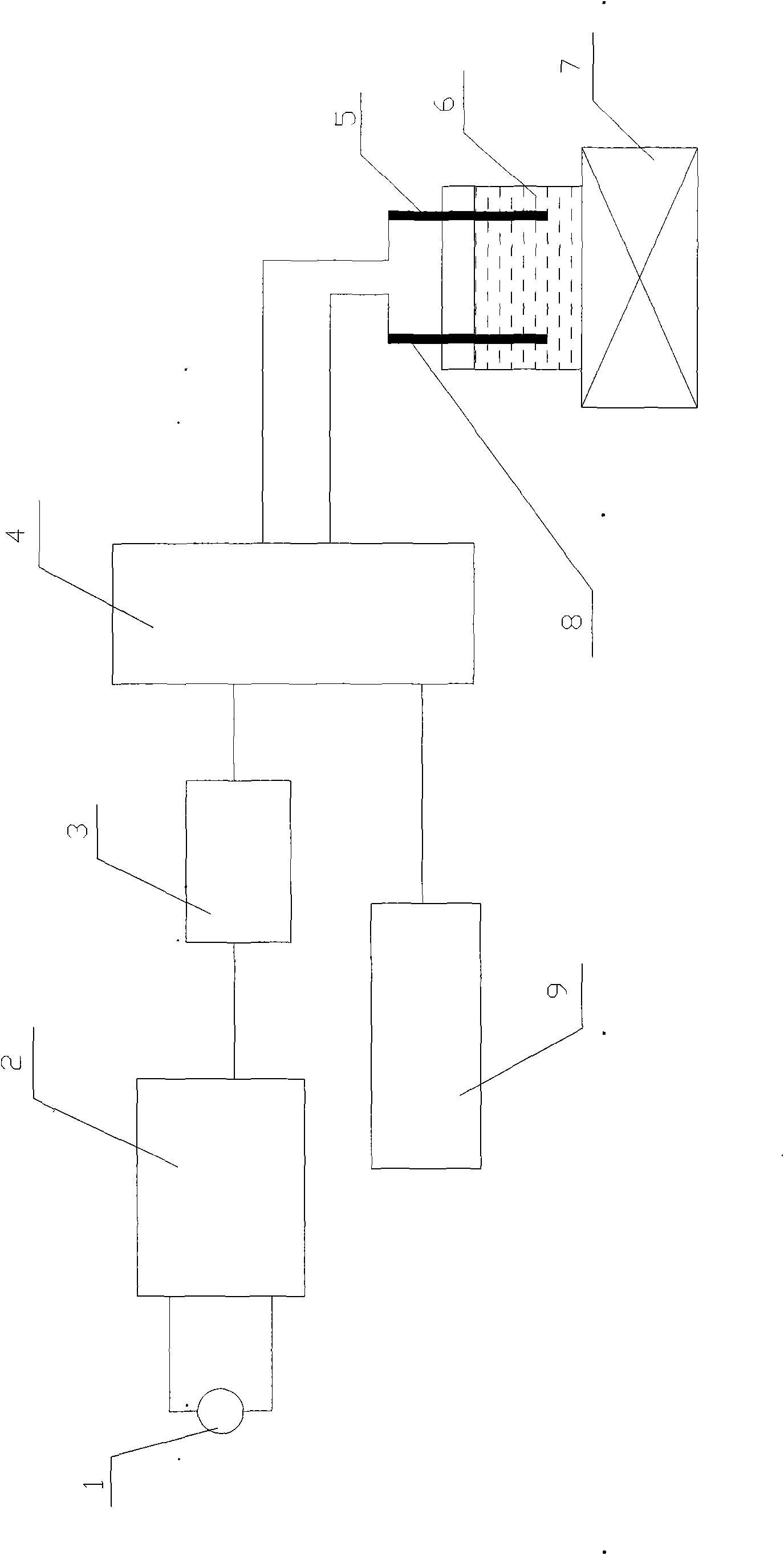Method and device for treating dye wastewater employing periodic reverse electrocoagulation
A technology of dye wastewater and electrocoagulation, applied in water/sewage treatment, chemical instruments and methods, textile industry wastewater treatment, etc., to achieve the effects of simple operation management, simple system maintenance, and reduced power consumption
- Summary
- Abstract
- Description
- Claims
- Application Information
AI Technical Summary
Problems solved by technology
Method used
Image
Examples
Embodiment 1
[0027] Introduce the dye wastewater into the electrolytic cell, and add electrolyte to the wastewater in the electrolytic cell to make the electrolyte concentration 0.01mol / L, turn on the stirrer, control the stirring rate to 1000 rpm, control the electrode voltage to 8V, and control the current commutation cycle: 10 Seconds, adjust the pH value of the wastewater to 5, electrolytically treat it for 30 minutes, and then discharge the treated water. The electrolyte is Na 2 SO 4 .
[0028] After analysis, the chroma of the effluent is 0.028 (10 times), the COD is 45mg / L, and the removal rates of the two are 99.6% and 71.5% respectively.
[0029] The power consumption is 0.024KWh / Kg dye.
Embodiment 2
[0031] Introduce the dye wastewater into the electrolytic cell, and add electrolyte to the wastewater in the electrolytic cell to make the electrolyte concentration 0.015mol / L, turn on the stirrer, control the stirring rate to 750 rpm, control the electrode voltage to 13V, and control the current commutation cycle: 20 seconds, adjust the pH value of the wastewater to 7, electrolytically treat it for 30 minutes, and then discharge the treated water. The electrolyte is Na 2 SO 4 .
[0032] After analysis, the chroma of the effluent is 0.067 (24 times), the COD is 55mg / L, and the removal rates of the two are 99.04% and 65.2% respectively.
[0033] The power consumption is 0.046KWh / Kg dye.
Embodiment 3
[0035] Introduce the dye wastewater into the electrolytic cell, and add electrolyte to the wastewater in the electrolytic cell to make the electrolyte concentration 0.008mol / L, turn on the stirrer, control the stirring rate to 1250 rpm, control the electrode voltage to 11V, and control the current commutation cycle: 6 Seconds, adjust the pH value of the wastewater to 6, electrolytically treat it for 40 minutes, and then discharge the treated water. The electrolyte is Na 2 SO 4 .
[0036] After analysis, the chroma of the effluent is 0.110, the COD is 20mg / L, and the removal rates of the two are 96.34% and 80% respectively.
[0037] The power consumption is 0.040KWh / Kg dye.
PUM
 Login to View More
Login to View More Abstract
Description
Claims
Application Information
 Login to View More
Login to View More - R&D
- Intellectual Property
- Life Sciences
- Materials
- Tech Scout
- Unparalleled Data Quality
- Higher Quality Content
- 60% Fewer Hallucinations
Browse by: Latest US Patents, China's latest patents, Technical Efficacy Thesaurus, Application Domain, Technology Topic, Popular Technical Reports.
© 2025 PatSnap. All rights reserved.Legal|Privacy policy|Modern Slavery Act Transparency Statement|Sitemap|About US| Contact US: help@patsnap.com


